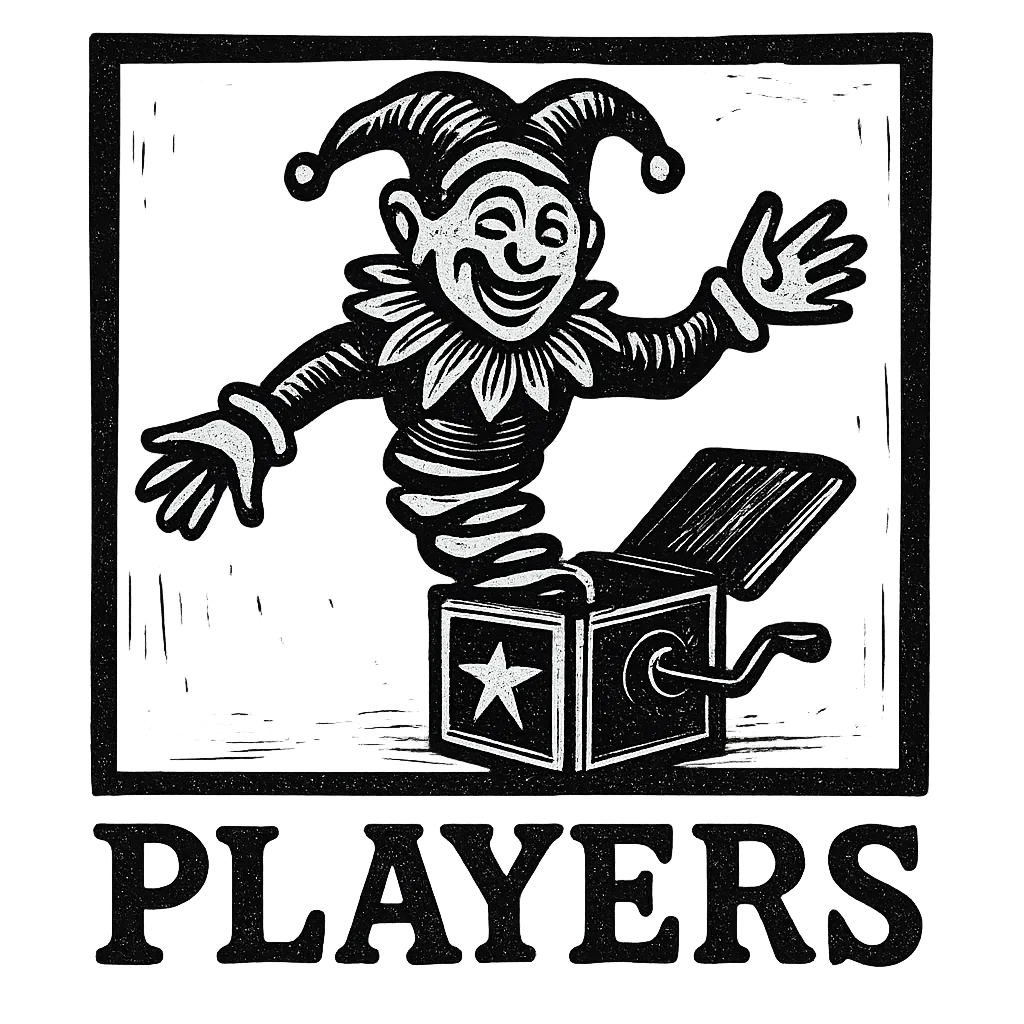#7 excerpted from “THE GET QUICK FILES: CHOOSE YOUR OWN CONJECTURE” as remembered by Mark Question
Unbroken Codes
1982 - 1986
When Coco LeBree abruptly walked out (again) the band looked doomed to tumble back into one of their signature implosions (again). But fate, or maybe just dumb luck and a touch of loyalty, tossed them a lifeline in the form of Christian Hait.
Old warhorse, fringe mystic, and notorious gearhead, Hait originally agreed to fill in for a handful of make-good gigs. Four years later, he was still there, hardwired into the chassis, running dark matter through the amps and whispering weird harmonic math into the microphones. What followed was one of those rare golden windows — four years where the machine didn’t just work, it thrummed, humming like a UFO engine built from broken Moogs and motivational paranoia.
They were grizzled but sharp, studio veterans by now, yet still possessed by the manic glint of a teenage garage band trying to crack the code of gods. And thanks to Hait’s chemical-smeared chalkboard brain, they did. The Get Quick dove headfirst into tonal arcana and bleeding-edge tech — sampling shadow frequencies, programming drum machines to mimic seizure patterns, wiring synths to astrological charts. Call it post-human pop or retro-future voodoo; either way, the records from this period still sound like they were beamed in from some brilliant, desperate dimension.
Live, they expanded — like some rock n roll hydra. Colonel Boran, a relic from the early 60s scene (and Erjk’s former Aston Martin mechanic) who now played instruments that didn’t even have names, began appearing at gigs. Word was he demanded to join the band after listening to DEVILWAVES — which, if you’ve ever heard it, is certifiable. But the strange sweetener he added to the mix — well, it worked.
But while the music was climbing into some haunted aether, the business side of things was going straight to hell.
By late ’85, tensions with their longtime label overlords at Cromicon Industries reached a peak — the kind of corporate cold war that ends in shouting, smashing, contract-shredding, and, allegedly, a steamroller parked on someone’s synthesizer collection. That was the end of a two-and-a-half decade dance with the devil. TGQ cut ties and bolted, gritting their teeth and nursing a lifetime’s worth of label-inflicted psychic bruises.
Professor Cromicon, ever the Bond villain in sleeve garters, didn’t blink. He claimed ownership of The Get Quick name and iconography — fonts, logos, eyeliner patents, everything — and retaliated with all the subtlety of a sledgehammer: he formed a new Get Quick. TGQ MkFake. A dopplegang-ensemble of session ringers and clone musicians, dressed up like ghosts of TGQ’s past and shoved onstage to play perfect, soulless re-enactments of the classics.
At first it was a novelty act, part joke and part tragedy, like the devil’s wax museum. But then the impostors — riding a wave of eerie déjà vu and tape-effect-drenched mimicry — started writing original songs. It was left turn absolutely no one saw coming. Two full albums, HIDDEN TRACKS (1977) and BAND OF THE BLACK MANTA (1978), smuggled themselves into the parking lot black market bloodstream like bootleg antibodies. Meanwhile, the real TGQ were too caught up chasing other rabbits through other realities to care.
It took a full-on legal and media blitzkrieg from S. True Smith to jam the brakes. The verdict: the Professor couldn’t call them The Get Quick anymore. So he rebranded the project with a shrug and a smirk — Mantaray. Because when the courts won’t let you steal the crown, you invent a new kingdom.
And here’s the kicker: Mantaray wasn’t bad. In fact, they were weirdly good. Maybe too good. The Professor stacked the deck with souls from the same underground haunts and sonic black markets that had birthed TGQ in the first place. To Mitch and Erik, it felt like an Et Tu Brute betrayal soaked in reverb — former friends and fellows, now repurposed as high-gloss clones, getting paid to pantomime their history.
But what started as disgust eventually rolled into something else completely. A tangled braid of bitterness, fascination, competition — and then, somehow, collaboration. The two camps — real and unreal, true and false — started swapping gear, trading riffs, touring and recording together under multiple aliases. The result? A period of wild, fractal cross-pollination so confusing and brilliant that not even their obsessive fanbase could keep track of who was who — and maybe that was the point.
Because by 1986, The Get Quick was more than a band. It was a virus, a myth, an earworm ideology. And once it started to mutate, multiply, and go massive, all the corporate lawyers in the world were powerless to stop it.
October 1982
TGQ Embrace Stereoscopic Sound
Dan Cooper, Norjak Suppliment
The Get Quick have been experimenting with a cutting-edge method of recording known as binaural audio. The technique is aimed at simulating a 360° audio field so that the listener can (through headphones) experience truly 3D sound.
Although sophisticated signal processors have been constructed to add depth and spatial separation to pre-recorded stereo signals in an attempt at approximating spatially accurate sound, The Get Quick have opted for a simultaneously more realistic and more outlandish approach. A dummy-head — complete with rubbery ear-folds and sinus cavities — is set up and positioned in the middle of the studio in which the band is playing — oh, and in place of eardrums there are fixed two electret condenser microphones.
Christian Hait claims the resulting recordings sound “astoundingly spatially accurate. Adding: “And the bass is amazing!”
Erjk Vanderwolf, though pleased with the results, admits to being more interested in “Phase effects, generating auditory illusions and exploiting the psycho-acoustic phantom effect to create so-called ‘impossible’ sounds and even induce hallucinations.”
* * * * * *
March 1983
Mitchell Joy Masters Puirt-a-Beul
Anthony I.M. Stark, Sempervirens
Word on the street has it that the new album by The Get Quick (FACE THE MUSIC, due out Tuesday) will feature some amazing vocalizations in the form of Scottish Mouth Music, known in Gaelic as “puirt-a-beul” (pronounced porsht-ah-buhl).
“The wonderful thing about Mouth Music for me,” explains Mr Joy, “is exploring all the variations and specific local traditions that have evolved over time after the migrations of the Celtic peoples.”
This odd old form of folk music is a lot more complex than standard singing. Mouth Music focuses on the rhythmic base of the song, with words often chosen solely for the textures and patterns they might provide. Because of this, for the most part, the lyrical gist adds up to nothing more than nonsensical wordplay — though often slyly peppered with puns and double-entendres.
Most Mouth Music features a pulsing, toe-tapping rhythm — which, to maintain, requires a level of stamina and breathing skill that only comes with much practice. Also the words are most often delivered in a rapid-fire style difficult to pull off considering the speed and complexity of the songs, which were originally performed to accompany dancing.
After the 1745 Jacobite uprising and the victory of the English at the bloody battle at Culloden, the pipes of the Scots were banned and the music of the Gaelic tradition suppressed with ruthless force. So the Highland clans began using their own voices to simulate the instruments so that they could still enjoy dances — as well as to remember and pass on the traditional tunes of their people.
“Celtic peoples from Scotland, Ireland, and Brittany have emigrated to Canada, Nova Scotia, Cape Breton, the Appalachian mountains, and Cajun Louisiana,” Joy continues. “And in each place the music has become colored and enriched in exciting ways. Not the least of which will be the manner in which we’ve integrated Mouth Music into The Get Quick Sound.”
You may want to set up a sneeze guard before listening.
* * * * * *
November 1983
Notes From The Underground
T. G. Hadwin, Libre Liberation Front
After a brief meeting with Mayor Charles Royer, S. True Smith announced that The Get Quick have been granted permission to hold a concert in the infamous underground city beneath the streets of Seattle.
In the aftermath of the Great Seattle Fire of 1889 the city leaders decided to regrade the streets (up to two stories higher in some places) to avoid a previous common problem of tidal flooding. After the new sidewalks were built the majority of the building owners shifted their businesses to the new ground floor — either doubling their storage space, or renting their newly subterranean floors to less-than-savory merchants. Soon a bustling underground neighborhood of speakeasies, gambling halls, opium dens and illegal flophouses for the homeless was in full flower.
S. T. has also consulted Bill Speidel — a local resident who has been offering guided tours of the Seattle Underground since 1965 — on the best locations for the concert, considering that only a small portion of the underground network has been restored. Much of the system is still unexplored and may be unsafe for general access by the public.
* * * * * *
February 1984
Girl Has Seizure Playing TGQ LP
David Webb, La Femme 100 Têtes
The March 24th seizure of 15 year-old Jilly DeRea has apparently lent some credence to speculation in certain circles that The Get Quick has long employed the insidious practice of “backmasking.”
The young Ms DeRea, an avid record collector and obsessive TGQ fan, was listening to the most recent TGQ long-player on the morning in question when she was suddenly overtaken with body tremors which caused her to lose consciousness and convulse wildly. The girl’s mother and family friend, a certain Dr Dradin Van Dvorak, witnessed the event firsthand.
Backmasking is the newest sensation to grip the public with fear. It has been alleged that certain rock musicians have been encoding the music they release to the public with hidden messages, which are recorded backwards and hidden within the mix.
These rumors have launched an ad-hoc investigation by the public at large to rout out these suspected messages. “Lucifer, the Light,” “Smoke ’n’ dust,” and “Come die with me,” are among the phrases supposedly discovered in several songs by The Get Quick.
Of TGQ’s camp, Mitchell Joy and Erjk Vanderwolf have both responded to the charges. Mr Joy is quoted as saying:
“This is nothing but a modern-day witch hunt. The entire concept of backmasking is utterly illogical and ridiculous. Who listens to music backwards? I don’t.”
While the meticulous Vanderwolf added:
“It is important to note that no scientific evidence exists to support the general public’s far-fetched assumption that the subconscious mind is capable of grasping the garbled nonsense of reversed speech, much less to miraculously transpose it into clear and comprehensible phrases. These charges are groundless, and stupid.”
He might just have a point . . . And besides, I, for one, can barely follow him when he’s speaking forwards.
* * * * * *
April 1984
The Get Quick Get Lucid
Harrison Mathews, Solus Locus
“Well, I thought the album was done,” recalled Erjk Vanderwolf, “then I discovered that I was dreaming and that we’d only just begun.” Such are the apparent pitfalls of lucid dreaming — a new method of operations for The Get Quick.
A lucid dream is simply a dream in which the dreamer realizes (without breaking off the dream and waking up) that he or she is, in fact, dreaming. From that point the dreamer is able to override the messy intentions of their subconscious and exact a deliberate control over the dream. Many religious and philosophical traditions have long practiced methods of inducing lucid dreams to achieve enlightenment.
“Besides the mental, emotional and even physical benefits,” Christian Hait explains, “lucid dreams enable us to work through problems, discover creative solutions, try various experiments, and tap into a constant source of inspiration.”
After spending some time in Tibet studying Buddhism, Hait stumbled upon the works of Hervey de Saint-Denys (Dreams and How to Guide Them; 1867) and Frederik Willems Van Eeden (i.e. his 1913 paper “A Study of Dreams.”) He has since become an avid practitioner, stating that his ultimate goal is to maintain, whether sleeping or awake, a continuously unbroken state of consciousness.
“Chris has introduced these methods as a way of operating,” Mitchell Joy reveals. “So far, it has worked wonders. We really feel like we’re getting a lot accomplished and the impact that these insights have had on the work is phenomenal. It’s also more fun than you can imagine. I mean, I’ve visited the past, as well as distant galaxies. I’ve flown over the rooftops of Paris and read the minds of others.”
“Overall it’s been a interesting experience,” agrees Erjk. “It’s true that I did an extraordinary amount of work inside a dream only to come to my senses and see that nothing actually got done. But now I look at it as priceless pre-production work, because ultimately it made things very easy in the studio — like connecting the dots when you already know what the picture is going to be.”
“The only drawback — if you want to call it that —” says Hait, “Is that once you are deep inside the method you will find yourself constantly wondering if what you’re experiencing is real or a dream. You just need to remind yourself that the answer to both questions is yes and no.”
* * * * * *
January 1985
TGQ Seek To Make Pop Music “POP”
Raymond Chessel, Baccalauréat Del Bacco
“It’s a revolution, like the invention of multi-track recorders were,” claims Christian Hait. “Only now, we’re playing in a different dimension.”
After years of experimentation there has been a breakthrough in the art of binaural recording (especially in the up/down dimension — which, according to Hait, has always been the weak-link of spatial rendition.) This new method is called “holophonic” recording. And yes, the theory is related to holograms.
Visual holograms are created by mixing the reflections of two separate laser beams as they hit an object from different angles and then recording the resulting interference pattern on film. Subsequently, a three-dimensional image will emerge from the pattern when the film is exposed to the same wavelengths of light.
With the idea that interference patterns can also be formed with sound waves, Argentinean inventor Hugo Zuccarelli pioneered a holophonic sound process by mixing a digitally superimposed inaudible reference signal over existing binaural audio. Postulating that the human ear adds a similar signal to the input it receives, the effect causes the listener (through headphones) to experience the sensations of 3-D sound.
“We’ve always been interested in soundscapes and such,” says Mitchell Joy. “But this also opens doors as far as so-called ‘pop music’ is concerned. Another dimension beyond the standard stereo balance to play in — and an exciting way to truly make sounds ‘pop!’”
Besides incorporating these theories into their recorded work, The Get Quick have also employed Zuccarelli to design and construct a special speaker system that would retain the spatial characteristics — to even a large outdoor audience. The possibilities are exciting.
* * * * * *
June 1985
TGQ Get Political, 1800s Style
Felippe Gallimard, Pendulum
The Get Quick has announced plans for what S. True Smith has dubbed “The Ruskin Tour,” which should commence shortly before the release of their new album.
John Ruskin was a 19th century renaissance man — an author, poet, artist, as well as an art critic, and social critic. He was extremely popular and influential in his day, with Oscar Wilde, Marcel Proust, Leo Tolstoy and Mahatma Gandhi among his many admirers.
His political philosophy inspired some to attempt to put his ideals into practice, spawning socialist utopias known as “Ruskin Colonies.” These included Ruskin, Nebraska; Ruskin, Florida; Ruskin, British Columbia; Waycross, Georgia; and Dickson County, Tennessee where the Ruskin Commonwealth Association existed at the end of the 19th century.
The idea behind The Get Quick’s so-called “Ruskin Tour,” is to play a special concert in each of these sites — some of which have not even existed for nearly 100 years. There is no word as of yet if this project will extend to Britain, which has a vast number of streets, places and colleges named in tribute to Ruskin.
* * * * * *
December 1985 Tape Leaks Glimpse Into ‘Wranglers' Abyss
Julius Augustus Wayland, The Macao Sun
In the deepest, most obscure corners of college dorm rooms and underground art salons, an illicit U-matic tape has surfaced, drawing all those starved for unreleased gems into a feverish frenzy. The tape — unofficially entitled Amerikan Wranglers: The Forgotten Shards — appears to be an early, incomplete cut of what was once hailed as The Get Quick’s audacious leap into television narrative.
No one is entirely sure who smuggled the footage out of the labyrinthine vaults of Split Level Recording’s underground editing facility, but the tape has found its way to a strange new audience: the avant-garde fanatics who devour fragmented culture as much as they create it. The 60-minute video is grainy, distorted, and patchy with bizarre edits, but what it reveals — while incomplete and chaotic — feels like a cinematic wreckage of cosmic proportion.
The film’s fragmented nature is itself a reflection of the disaster surrounding Amerikan Wranglers, a project once dreamed of as a vision so grand that even Orson Welles, in the twilight of his own career, seemed to lose himself in its eccentricity. But to witness the feverish malcontents who’ve watched the leak, the excitement is palpable. This is no ordinary lost media — this is a piece of time-altering myth-making, a film fractured by a thousand hands and bathed in the golden glow of obscure pop culture.
One particular scene, rife with glitching, flashes of psychedelic color, features the surreal agents of Wranglers — drunken yet dreamlike, stumbling across the desert plains of 1970s America. The scene has no coherent plot, only disturbing flashes of sudden violence and philosophical quips that verge on absurdity. It’s as if Amerikan Wranglers was never meant to be made for linear understanding but rather as an ethereal transmission for those seeking transcendence through cinematic chaos.
Fan reaction to the U-matic tape has ranged from wild excitement to existential horror. College zine editors are claiming that this “discovered footage” is a clear example of how the establishment has tried to suppress art too potent for human comprehension.
One such underground publication, The Standford Filmologist’s Guide, writes: “What Amerikan Wranglers represents is the uncomfortable juxtaposition of a film that was never meant to be finished — its very incompleteness is the key to understanding the fragility of culture itself. Did the film implode under its own ambition, or did we? Either way, it remains a testament to the godlike and ruinous potential of The Get Quick’s essence.”
It is unclear whether the final cut of Amerikan Wranglers will ever see the light of day, but for now, this U-matic leak has become more than just a mysterious treasure: it is an artifact for the disillusioned youth of the 80s — a touchstone of something larger, something mythic, that never fully formed. The Get Quick, it seems, has once again become an unwilling icon of both chaos and genius.
So, as the fans in those musty, dimly-lit viewing rooms continue to dissect what was once an incomprehensible dream, they realize that perhaps it was never about finishing anything at all — only about the collective longing for something unreal, something unreachable. The Wranglers may never ride into the sunset, but their fractured existence continues to echo in the halls of both the lost and the found.
* * * * * *
October 1985
LeBree’s Bust-Up
Joris K. Durtal, Oulipo Mathématique
Police were summoned last night to the Hansa Tonstudio in Berlin where they found Coco LeBree (who has been ensconced there for the past six weeks) suffering from minor cuts and bruises and a recently broken nose. It has been reported that the in-house scuffle was with confrontational grunting avant-jazz pianist Keith Jarrett, who has reportedly been working with LeBree on some, as of yet, unspecified recordings.
Jarrett, allegedly quite the worse for wear himself, was not on the scene when the authorities arrived. A figure was seen staggering towards the underground and it is presumed that Jarrett has since fled Germany.
Both men are notoriously hardheaded, each with a myriad of idiosyncratic eccentricities. It is speculated that the disagreement may have had something to do with LeBree’s technical obsession (and allergies) and Jarrett’s aversion to electronic instruments (and coughing).
No charges have been filed and LeBree is going so far as to deny knowledge of the existence of anyone named Keith Jarrett.
* * * * * *
June 1986
TGQ Chase The Gold Bug
Felippe Gallimard, Pendulum
After wrapping a six-week tour The Get Quick jetted directly to Nova Scotia, ostensibly to shoot a promotional film. But reports are now coming in that Mister Joy & Co have been sighted in the region of the mysterious Oak Island, where their friend and colleague, experimental musician and adventure-seeker, Colonel Boran has been entrenched for several weeks, attempting to excavate a fabled treasure.
In 1795 a young local boy came across a circular impression in the ground beneath a tree with branches cut in a way that led him to believe it had been used as a pulley. Knowing the local tales of pirates and buried treasure, the boy and a friend began to dig, quickly finding evidence of a manmade tunnel, which lent credence to their suspicions. Thus began the on-going odyssey to unearth the secrets of the so-called “Money Pit.”
Over the years, digging, drilling and even dynamiting have yielded a few tantalizing clues, but no solution. The Money Pit apparently features manmade tunnels, limestone caverns and a cement vault. The search has been spurred on by an enigmatic cipher stone and thwarted by elaborate booby-traps which repeatedly flood the tunnels. It is a costly venture, and Colonel Boran, a man of considerable means, is only the latest in a series of adventurous entrepreneurs to gamble on the pit. To date, Oak Island Treasure Fever has swallowed several fortunes and claimed six lives.
Despite the lack of proof, many theories have been proffered as to the origins and the nature of treasure. Everything from Captain Kidd’s booty to Inca gold to the original manuscripts of Shakespeare have been put forth. And pirates, Vikings, Templars and Freemasons have all been suspected as the mysterious engineers of the pit.
In 1976 a bore-hole was dug and a camera lowered down 230 feet to a bedrock cavity. It reportedly captured images of three treasure chests, tools and a human corpse. Unfortunately the unstable hole quickly collapsed. It is speculated that Colonel Boran’s new attempt focuses on reopening the bore-hole while reinforcing it with steel tubing large enough for a team of divers to descend. And while it is known that both Mitchell Joy and Erjk Vanderwolf are accomplished SCUBA divers, no word as of yet on the speculation that they will be among the exploration team.
* * * * * *
October 1986
Wolfin’ Out & About
John Reid, Conventional Weapons
Erjk Vanderwolf has been popping up for unannounced gigs at clubs and smaller venues across the northeast. A band consisting of members of the infamous Mantaray (including guitarist Blackie Kohl) is backing him up. The sets have been said to consist of a slew of covers as well as selections from TGQ’s catalogue and there have been rumors that recordings of the shows are being planned for release as an official “bootleg” album.





